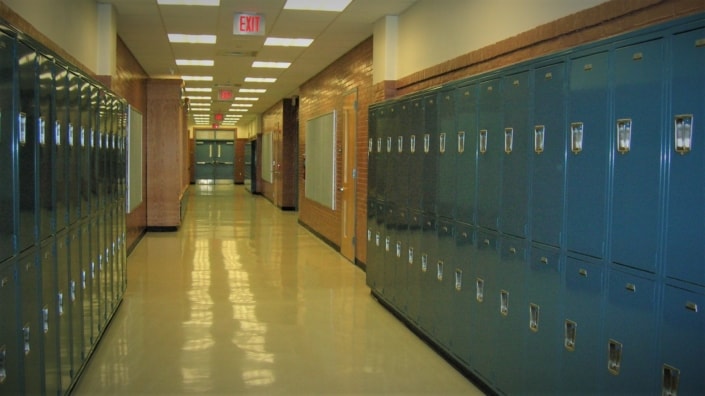By Douglas Parisi
We live in a time where we need to educate ourselves and our family on unfortunate events. It’s important to empower your loved ones to take action in active shooter situations, even amidst pangs of fear.
This information is designed to highlight important conceptual aspects of readiness training. The conditions that would necessitate the initiation of an emergency action plan are unpredictable and dynamic. To determine the best course of action a variety of circumstances and factors must be considered on an individual basis. The principles of evacuation, barricade and protection are paramount to minimizing casualties. The purpose is to preconceive potential options to help determine how you could respond to danger.
The motivations, weapons, locations, and response to a hostile event are unpredictable. Whether you are dealing with a domestic situation involving a coworker or patron, a disgruntled employee, a person with criminal intentions, someone in mental health crisis, or other events there are things that can be done that mitigate violence and potentially reduce or eliminate casualties. The most important aspect is having a plan of action in place. This plan is based on the aspects of getting away from harm, preventing an intruder from getting to you and being able to protect yourself or in common parlance; run, hide, fight. For this to work you need to think through the aspects of safety.
Here are 5 things to remember in the case of an armed shooter.
- Getting out of the building is only half the process
If you can exit the building, know where to go once outside. In the event of an armed shooter, people should not hover in open areas where they might become a potential target if visible from the building. Certain exits might be obstructed by fences, landscaping, buildings, etc. If your only exit opens into a confide area you should consider staying and barricading inside. It is essential to plan where they should go once outside, and where they can effectively exit.
- Determine the ‘safer corner’ to get out of sight in a crisis
If you decide to barricade in a room the door should be locked and items stacked to hinder entry. The “safer corner” should be discussed openly. This is an area that is out of sight from internal windows and usually on the same wall as the door but in the opposite corner. People don’t always know where they can hide out of sight from the hallway windows in offices and classrooms. This unique space should be free of large objects like file cabinets and heavy desks that aren’t easily moved to accommodate the entire group.
- Determine how to communicate any given crisis
Does your building have a public address system, alarm, mass communication network, etc? Do you know how to use/access such systems to alert others of a threat in the building? These are questions you need to ask yourself and those in charge (such as teachers). While the common parlance is to speak plainly “Active Shooter – Lockdown –Lockdown,” there are entities that use color-coded schemes like ‘code red.’ If you arepart of a group that use these, you should reference your emergency action plan to become familiar with the expected process. Be prepared to alert others that might be unfamiliar with the code and unaware of the potential dangers.
- Decipher how to adhere to the security protocols that are in place
Do you follow the access control process or open the door for everyone? It’s essential to analyze current security such as initiating visitor sign ins. If there are concerns with former employees, domestic issues with orders of protection, restraining orders, or disgruntled customers, make sure such instances are communicated to all faculty in the building. The more adherence to safety rules by everyone the more robust the security posture becomes.
- Make sure you know how to perform basic life extending trauma in an emergency?
The DHS Stop the Bleed program espouses the need for pressure, tourniquets and clotting agents. Do you understand the dire need to assist the wounded when it can be done safety to stop hemorrhaging? In a mass casualty event, 48 wounded in El Paso 36 injured in Dayton will overwhelm responding emergency teams. Keep in mind; extending the life of an injured person until help arrives is critical. It takes time for enough ambulances to arrive and to transport numbers to various hospitals, basic trauma care can save lives.
5 Ways to Talk to your Kids About Active Shooters
When speaking with kids about threats to their safety, it is important to let them know that these are extremely rare and low probability events. With that being said, it is essential to educate them on being prepared.
- The most critical thing for children to know is that moving away from any given crisis is the best thing to do. Remaining in a public building when there are exits nearby is not the right thing. Tell them to get away from potential threat and keep moving.
- If you can’t get out of the building, teach them to find a secure place. Hiding under a table or laying down in the open is not a good strategy. Make sure they are aware of a room or enclosed space to secure themselves from the shooter.
- Children need to know that in a mass casualty event, the police are there to engage the shooter. In other words, they shouldn’t follow the police. Tell them to look for another trusted adult, employee, or worker that can help. In these cases, police have a job to do that involves danger.
- Stay off your phone until you are safe. In school shootings, we have seen andheard stories of students that have unnecessarily gotten on their phones to call their parents. When an adult or teacher is trying to give instructions, tell them where to run, or where to go, children should be focusing all attention on their caregiver. Encourage them to stay off the phone until they are 100% physically safe. (Parents shouldn’t attempt to contact their children as the phone might ring loudly during the crisis.)
- There are no jokes, comments, or threats about harming others that shouldn’t be reported to an adult. Too many shooters have informed others of their intentions prior to committing an atrocity. Children often think that if they know something then the adults must know it as well. As a result, kids should be aware and always report statements implying violence… and these reports should be taken seriously. Most children see suicidal ideations on social media and never report them.
Douglas Parisi is the Director of Training at SafeDefend.com






